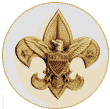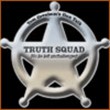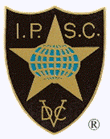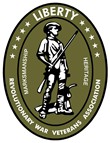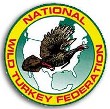| This is the story of Rodrigo Diaz de Bivar, El Cid Campeador, the great Spanish hero of the epic Poema de Mio Cid. I have not tried to tell the story of the poem, but to discover the truth of the man's life. My best source has been W.S. Merwin's Introduction to the Mentor Classic version. The Cid's grandson was a king of Navarre, so many of us are descended from him.
In the days after the death of Sancho el Mayor, his son Fernando I had united all of northwest Spain as king of Leon and Castilla with Galicia. Fernando's brothers had inherited Navarra, Aragon, and Sobrarbe. Fernando was the eldest of the brothers and called himself emperor, with superiority over them.
In Castilla at that time a young boy was growing up; he was Rodrigo Diaz de Bivar (Vivar), also called Ruy Diaz. He had been born around 1043 in Bivar, a village to the north of Burgos. His father was of minor nobility and lived in the family home in Bivar. Rodrigo's mother was of a higher degree of nobility, and she had considerable influence at court. As a boy Rodrigo went to live in and be brought up in the court of Prince Sancho, one of Fernando's sons.
In those days there were still Moslems or Moors in Spain; it was a long process to get them out. So when Fernando had united his kingdom, he took the field against the Moors. The Christian armies pushed the Moors back to the banks of the Tagus in the south and into Valencia on the southeast. They began to close around Toledo, "the shield of Andalusia." Fernando reached the gates of Sevilla without finding an enemy to meet him.
By the spring of 1063, when Rodrigo was 20, Prince Sancho had dubbed him a knight. He went with the prince to lift the siege of Graus, which was besieged by Sancho's uncle, Ramiro I of Aragon. Sancho attacked, and Rodrigo was among his knights. Ramiro was killed in the battle.
In December of that year, Fernando decided to divide his kingdom (it included lands ruled by friendly Moors who were subject to his rule) among his sons; perhaps he thought he would retire. He gave Castilla and Zaragoza to Sancho. Alfonso the Brave received Leon and the dependency of Toledo. Garcia was given Galicia, a piece of the present Portugal, and the Moorish kingdoms of Sevilla and Badajoz. Fernando gave his daughters only monasteries, and that was on condition that they would never marry.
Sancho didn't much like his father splitting up the realm, and neither did his sister Urraca. According to several old accounts, she was having an incestuous affair with their brother Alfonso. She used that leverage to get the town of Zamora from Alfonso, and she was called Urraca of Zamora.
Fernando's children honored the division as long as he lived. He died in 1065 and their mother died in 1067. Then it was civil war.
Sancho was crowned Sancho II of Castilla, and he appointed Rodrigo his chief marshal or alferez of his army; this gave Rodrigo the highest position at court.
Sancho was having trouble with the Moorish king of Zaragoza over paying his tribute money. So in 1067 he laid siege to Zaragoza, and Rodrigo (at 24) was his general. A Hebrew chronicle of that time gives all the credit to "Cidi Ru Diaz," so Rodrigo must already have been known as "mio Cid [my Lord]."
The next year war broke out with Leon. Sancho really wanted Leon, but we don't know exactly how the war came about. There was a great battle on the plain of Llantada, and Sancho, with Rodrigo at the head of the army, routed the army of Leon. Sancho and Alfonso had agreed that the battle would decide everything and the winner would take the other's kingdom, but Alfonso changed his mind and fled into Leon.
Three years later the two brothers managed to cooperate for a brief time. They got together and attacked their brother Garcia, took his kingdom, and split it.
At about that time, when Rodrigo was 28, he was involved as alferez in a trial by combat to settle a boundary dispute between Navarra and Castilla. He was "spectacularly victorious" over the champion from Navarra, and from that time on he was called "El Campeador [the Great Warrior or Champion]."
At the beginning of 1072 Sancho and Alfonso were at war again. There was a battle on the plain of Golpejera, and one account says Sancho was captured and rescued by Rodrigo. Their side won, and Sancho went to many castles and cities in Leon - with Alfonso in chains - to receive their submission. Then he was crowned in Leon on Jan. 12, 1072, and he imprisoned Alfonso in the castle of Burgos.
Urraca was very upset, and she went to Burgos to plead for Alfonso. She begged Sancho to just exile him to some Moorish place in the south. Sancho agreed and sent Alfonso to Toledo, where King Mamun was a friend of Alfonso's. Urraca also arranged for three important people to go with Alfonso - his former tutor, Pedro Ansurez, and his two brothers, Gonzalo and Fernando. They were counts, the "Heirs of Carrion," members of the Beni-Gomez family.
Alfonso stayed in Toledo for nine months, plotting. Pedro Ansurez went back and forth between him and Urraca in Zamora. Finally Sancho heard that Alfonso's men were gathering in Zamora and planning a rebellion, so Sancho and Rodrigo laid siege to the city. It would have worked, but Urraca hatched a plot. On Sunday, Oct. 7, 1072, a knight of hers slipped into the Castilian camp, got to Sancho, and ran him through the chest with his lance. Sancho died at 34.
Alfonso became king of Leon again, and he gave his beloved sister Urraca the title of queen. Then he went to Burgos, with Urraca and the Beni-Gomez clan, to receive the crown of Castilla.
Rodrigo and other knights demanded that Alfonso swear that he had nothing to do with Sancho's murder - this was according to Spanish feudal law. Alfonso put his hands on the statues of the apostles on the altar of the Church of Santa Gadea and swore to Rodrigo - three times. Then Rodrigo kissed his hand and accepted him as his lord.
Alfonso resumed the work of taking back Spain from the Moors. He swept through the valley of the Guadalquivir to Tarifa, rode into the ocean, and claimed "the last land in Spain."
In the beginning Alfonso favored Rodrigo at court, but the Beni-Gomez were still his favorites and one of them, Garcia Ordonez, became alferez. He was not a great success and had to be taken from the post and given a county instead.
Alfonso's problem with his alferez may have been part of the reason that he decided to give Rodrigo a wife from his own family. On July 19, 1074, Rodrigo married Alfonso's niece, Dona (Lady) Ximena Diaz, daughter of the count of Oviedo and granddaughter of Alfonso V of Leon. (Her name is also spelled Jimena or Chimena.)
In the same year Alfonso was married, but in 1079 he repudiated his wife. The next year he married Costanzia of Burgundy, and they had one child, a girl named Urraca after his beloved sister.
He already had two illegitimate daughters, Elvire and Theresa, who would become queen of Portugal.
Costanzia brought the French influence, a civilizing influence, to Alfonso's court. She wanted the Cistercian monks of Cluny, and Alfonso agreed. They came and began to reform the church in Leon and Castilla, which became an advance guard in the Crusades. By Alfonso's decision, the Roman ritual was established in place of the old missal of Saint Ididore - called Mozarabic. Alfonso also later married his daughters to French princes.
Rodrigo served Alfonso in various important posts, but antagonized the Beni-Gomez. In 1081 Alfonso went off to lay a siege, and Rodrigo stayed home because he was sick. An army of Moors invaded Castilla, and Rodrigo attacked them. He plundered and razed their own lands and brought back 7,000 prisoners and great treasure. The Beni-Gomez were more jealous than ever, and they accused him of antagonizing friendly Moors who lived near the others. Alfonso banished him from Castilla.
Rodrigo and his own vassal knights went to Ramon Berenguer, the count of Barcelona, and offered his services. He and his knights stayed there, but it didn't work out. Then they went to offer his services to the Moorish king of Zaragoza. As his ally he soon found himself in the field against Ramon Berenguer; he defeated him and held him prisoner for five days.
Alfonso had set out to rule all Spain, and in 1085 he marched against Zaragoza. Rodrigo had to either fight him or leave; it was a ticklish moral problem. He and his knights left and camped at Tudela.
Alfonso had spared Toledo because of his friend there, but in 1086 his friend was dead and he took Toledo. All the other Moorish princes in southern Spain began to get very worried.
In Africa a tribe from the Sahara began a jihad and set out to conquer the older, more settled Moorish lands. They were led by Yusuf ben Texufin. The king of Seville had asked Yusuf to come and help him against Alfonso, but he was busy conquering North Africa. In 1085 the kings of Seville and Badajoz again asked him to come and help throw off the yoke of the Christians, and he came. A huge army crossed the straits of Gibraltar, and even before Yusuf got to Seville, other Moorish kings in south Spain had joined him. Alfonso had to abandon his siege of Zaragoza and get ready to fight the Moors. Other kings and princes sent help; some knights came even from Italy and France. But he didn't ask Rodrigo to help.
The forces met in a huge battle on Oct. 23, 1085. The Christians were facing new methods of warfare, and they were greatly outnumbered. They lost badly, and Alfonso barely escaped. Just then Yusuf was called back to Africa by his son's death, and the Moorish forces settled in where they were.
Alfonso finally asked the Cid to come back. There was a reconciliation, and Rodrigo was given honors, lands, and castles. Then he began to fight the Moors.
The friendly Moorish king of Valencia had sent pleas for help, and Rodrigo went with 3,000 knights. He drove the African Moors out of the area and restored order. King Alcadir was very grateful and became Rodrigo's tributary, giving him money each week. Rodrigo also received tribute from lesser rulers in the area.
Some of the Cid's men got close enough to Seville to worry Motamid, the king, and he called for Yusuf again. Yusuf landed in the south in 1089, joined with the southern Moorish kings, and went after Rodrigo's vassals in Murcia.
Alfonso and the Cid each started out with an army; they were to meet each other, but they missed each other by accident. Alfonso listened to Rodrigo's enemies and banished him again, taking away everything he'd given him. He even imprisoned Dona Ximena and their three children for a time, but then let them go to join Rodrigo.
Yusuf went back to Africa again, but left a large army. At that point the king of Valencia refused to pay tribute, and all the others in the area paid tribute through him. So Rodrigo had to launch a raiding campaign to restore his lordship of Valencia and his tribute. No sooner was that taken care of than he had to fight the count of Barcelona again.
Meanwhile, the Moorish kings of the south had become afraid of Yusuf and were switching sides. Yusuf came back again in 1090 and sent the kings of Granada and Malaga to Africa in chains. The king of Sevilla appealed to Alfonso.
Alfonso went south with his army and took Granada. Through the efforts of Queen Costanza, the Cid met him there. They were reconciled again, and again it didn't last long. Rodrigo and his vassals went back to Valencia. Costanzia died in 1092, and the next year Alfonso married Bertha, daughter of Wilhelm I, count of Burgundy.
Yusuf's army took Cordoba, Seville, Almeria, and Murcia. The Cid fortified Pena Cadiella, the pass between the south and the plain of Valencia. Alfonso offered him help, but then played a dirty trick and tried to take Valencia while Rodrigo was away. It didn't work. Rodrigo figured the Beni-Gomez were behind it, and he invaded their ancestral lands, sacking and burning, etc.
Meanwhile, there was a conspiracy and rebellion within the city of Valencia, led by Moors who were supporters of Yusuf's son, and the old king was killed. Rodrigo took the suburbs of Valencia back and laid siege to the main city, dickering for terms.
Finally Yusuf brought a huge army after the Cid, onto the plain of Valencia. On the night of Oct. 25, 1094, Rodrigo's forces moved out. Parties of knights hid in the ravines around the Moorish camp, and at dawn Rodrigo's main force was on the plain, facing the Moors. Yusuf's army charged, Rodrigo's retreated, and the rest of the Castilians charged down from the ravines. The Moors broke and tried to run, and the Christians rode into them. It was a complete win.
Alfonso was on the way to help Rodrigo when he heard, so he turned south and laid waste more of the lands under Moorish control.
Queen Bertha died on Jan. 24, 1095. After that, Alfonso lived with - and some say married in 1095 - Zaida, daughter of Mahomel-Ben-Abad, Moorish king of Seville. She became a Christian and took the name of Maria Isabelle.
Rodrigo consolidated his position in Valencia, and Pedro, the new king of Aragon, sent a force of knights to help. Late in 1096 Rodrigo took an expedition to secure his outer fortresses and met a Moorish army of 30,000. He maneuvered to catch them in a narrow place and again won a great battle.
In that year Alfonso was defeated by Yusuf at Consuegra, and Rodrigo's only son, who was serving under Alfonso, was killed in the battle.
There was another battle and two sieges, and by the late summer of 1098 Rodrigo was in secure control of the whole province of Valencia.
Rodrigo Diaz de Bivar, el Cid Campeador, died in 1099 at the age of 56.
Two years later a new African general laid siege to the city of Valencia. Rodrigo's widow, Ximena, defended the city until Alfonso arrived with an army. The Moors fell back, but Alfonso decided it would be impossible to hold the city without Rodrigo. He and Ximena, with their armies, went back to Toledo, taking the Cid's body. To keep the Moors from taking the city as it was, they burned Valencia.
The Poem of the Cid tells a story about Rodrigo's two daughters; we don't know if any of it is true. It says that after Rodrigo conquered Valencia and was reconciled with Alfonso, the king brought about a marriage of the Cid's two daughters with the Heirs of Carrion, the two brothers leading the Beni-Gomez family. The two husbands, angry with Rodrigo and jealous of him, decided to get back at him through his daughters. They stripped the two wives, beat them badly, and left them; apparently thinking they would die. But they were saved and recovered, and the husbands got their come-uppance. According to the story, two princes from Navarra and Aragon then married Rodrigo's daughters.
We do know that Rodrigo's daughter Christina married Ramiro Sanchez, the count of Monzon, son of Sancho Garces IV, king of Navarra, and Christina's son became king of Navarra. He was Garcia Ramirez IV, El Restaurador (the Restorer).
|




